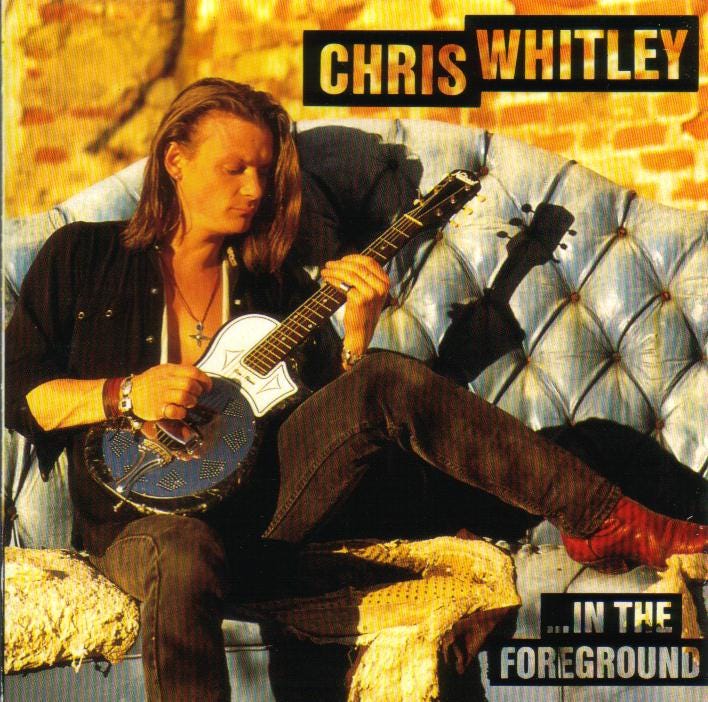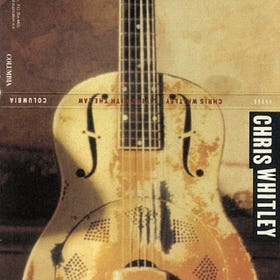Many thanks to Anders Halvorsen, Hiroshi Suda, Andi Lechner, and other ATCW group members for their generous help identifying these guitars.
Chris Whitley played a variety of acoustic guitars, ranging from resonators - e.g., his most-often used Nationals and Dobros - to standard acoustics, such as those made by Martin and Gibson. Part 1 of this series examines Whitley’s Nationals.
Chris played several guitars broadly described as manufactured by "National." Because some form of National guitar company has been making guitars for almost 100 years, a full review of its history is beyond the scope of this article. Suffice it to say that "National" as a broad company name may include National String Instrument, National/Dobro, Original Musical Instrument (OMI), and National Reso-phonic, the latter being the only iteration still making guitars marketed as Nationals today. Whitley's "National" guitar models include a National Reso-phonic 1133, National String Instrument Style O, National Style O, and National String Instrument Triolian. Because the OMI/Dobro brand is a bit of an outlier from the broader National brand, I will discuss those guitars in Part II of this series.
National Reso-phonic 1133
In the Dust Radio documentary, Rick Kelly spoke briefly about the first guitar Chris got from his shop - a National Reso-phonic 1133 three-quarter-size (also called Student Model).
Chris took this guitar with him when he moved to Belgium, as shown in these photos from July 1981.
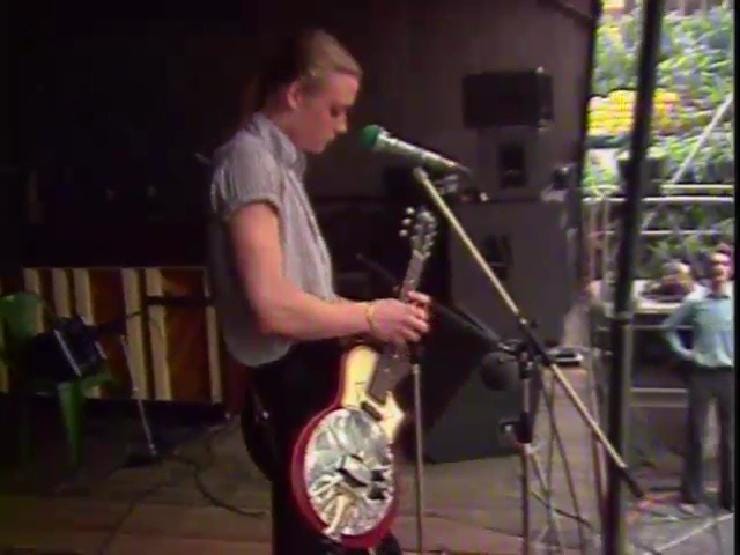
Many thanks to Anders Halvorsen for the following info about Whitley's National Reso-phonic 1133 guitar:
The vintage National Reso-phonic 1133 was a pure, acoustic instrument. The pickups in Chris's Reso-phonic guitars were added later and are not original. Chris owned at least two or three of these Reso-phonic guitars: The red one that's pictured with a very young Chris (see photos above) and two black ones with different cover-plates. These black ones could be the same, as one of the cover-plates is not original and could have been a replacement.
Photos support Anders' assertion that Chris owned at least two black 1133s. Note that, in the photo below, the white area has only triangular objects as decoration.
In this screen capture from a live performance in 2004, another black 1133 has multiple splotches/stars as decoration in the white area.
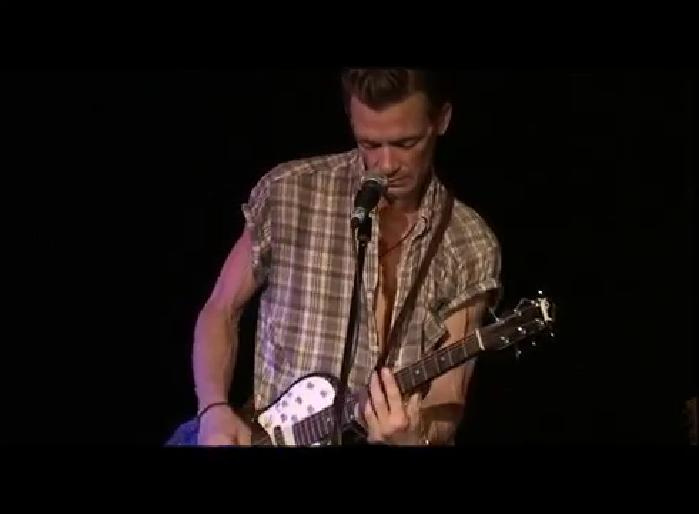
Whether these are two different guitars or the same guitar with different cover-plates is anyone's guess.
Why the 1133? I don't know much about guitars and don't have great discernment regarding their different tones, but even I can hear the tonal differences between the 1133 and Whitley's National 1930/31 Triolian, aka Mustard. Listen to “Indian Summer” played first on the 1133, then on Mustard, and I think you'll understand why Chris included the 1133 in his National guitar collection.
“Indian Summer” - National Reso-phonic 1133:
“Indian Summer” - National Triolian:
National Style Os (1940 and 2002)
After much confusion and more help from people who know these things, I now understand that Chris played two Style Os: a vintage National String Instrument from 1940 and a new National Reso-phonic Company model from 2002.
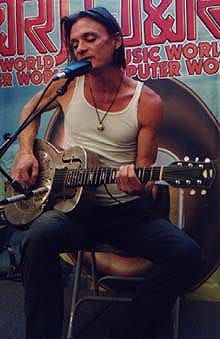
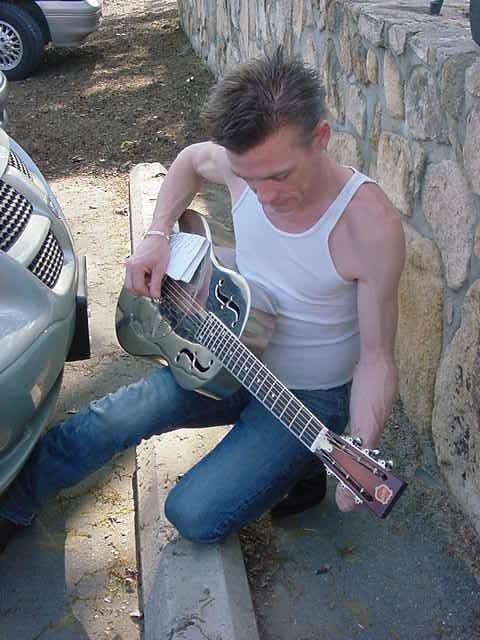
Thanks to Hiroshi Suda and Anders Halvorsen, here are the major differences between the two models:
Head (Slotted on new / Flat on vintage)
Neck (12 fret joint on new / 14 fret joint on vintage)
Position mark (dot on new /parallelogram on vintage)
Body shape and pattern of the cover plate (raised 4-spoke pinwheel on new/no pinwheel on vintage)
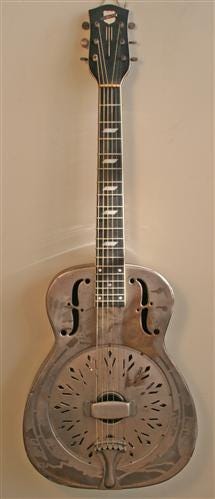
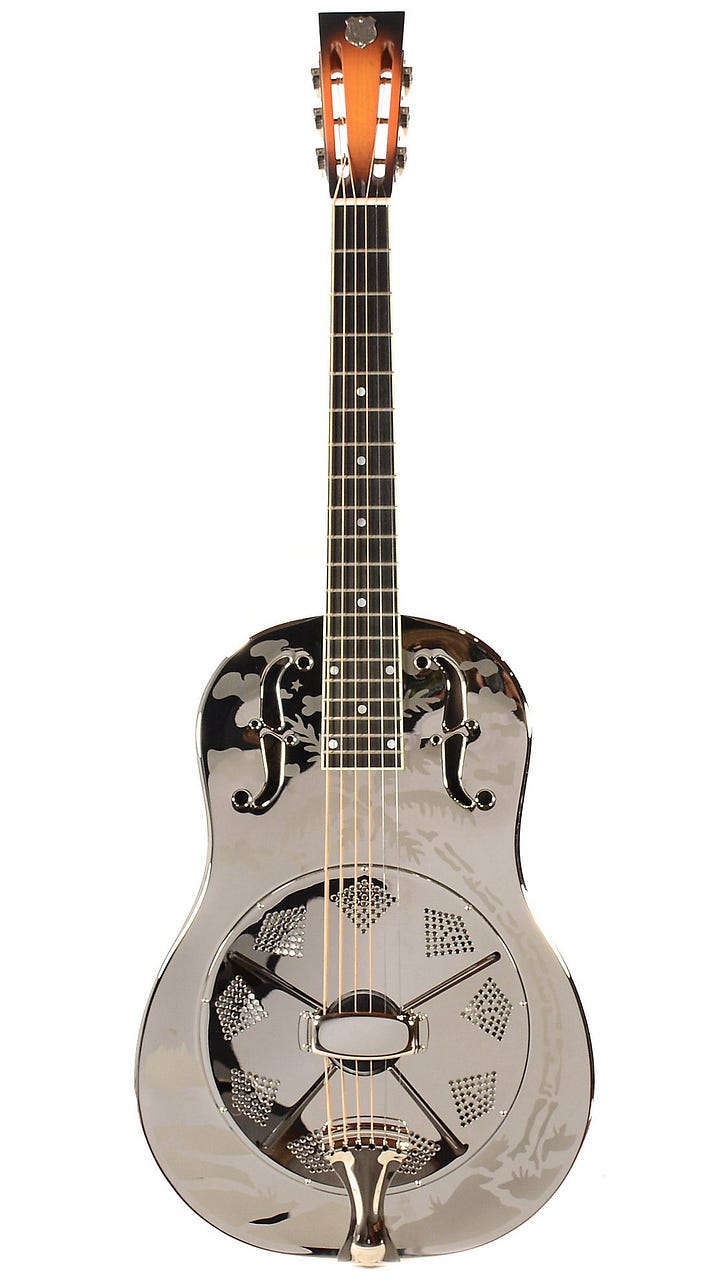
Chris used his 1940 Style O extensively on Dirt Floor tracks, including “Accordingly,” “Wild Country,” “From One Island to Another,” “Altitude,” and “Dirt Floor.” Re the 2002 Style O, Hiroshi Suda notes, "When I played this guitar at the 2006 NY Tribute, I found 'MEDICINE WHEEL' engraved (by Chris, I believe) on the headstock."
More information about vintage Style Os can be found here; learn more about contemporary Style Os on the National website.
In a 2020 ATCW group post, Andi Lechner shared photos taken by Matthias Macht - drummer on Whitley’s Hotel Vast Horizon and Soft Dangerous Shores - and confirmed that, based on the old Style O's serial number (C5759), it's a 1940. Many thanks to Andi and Matthias for this invaluable documentation.


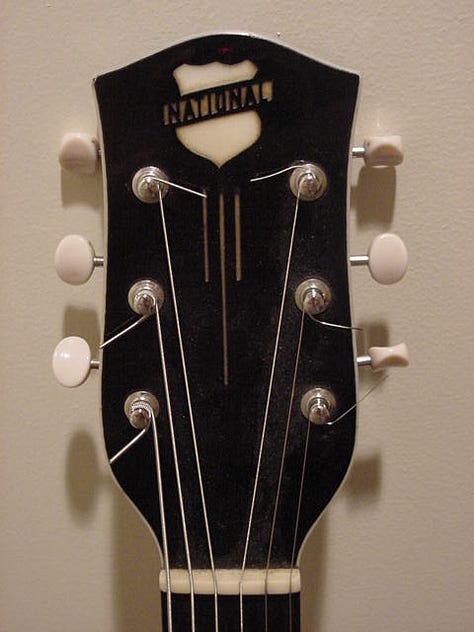
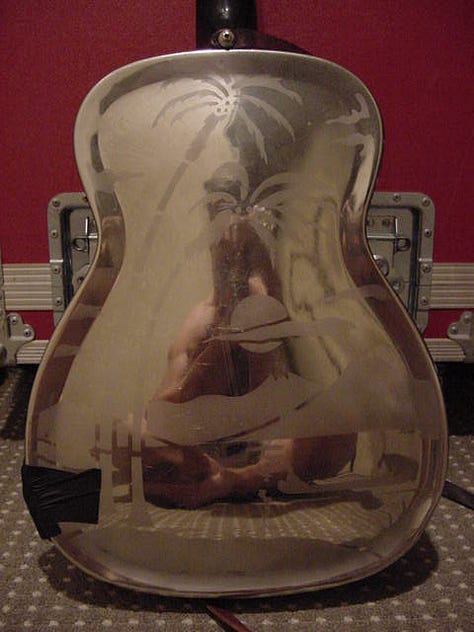
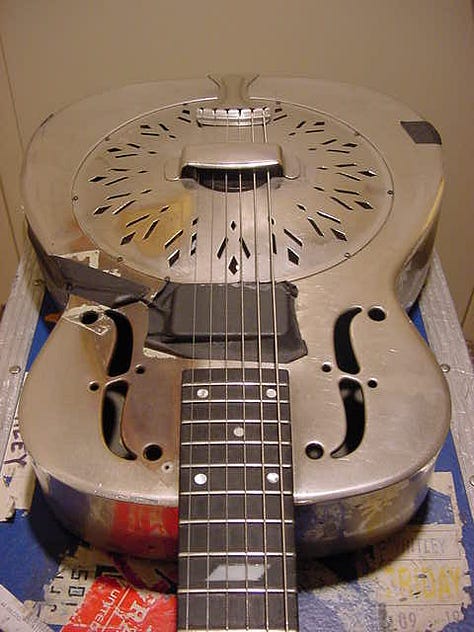

Late ’30/Early ’31 National Triolian
Whitley’s most recognizable guitar, the National Triolian was featured extensively on promotional materials for Living with the Law. This icon, which he named “Mustard,” is so special that it merits a separate blog post with more pictures and a full discussion of this gem.
Mustard: Chris Whitley's Iconic Guitar
This post is a lightly edited version of one of my first essays on my WordPress blog. Thanks to Dan Whitley and Duke Patterson for providing much of the info used here.
Next Up ….
Part II will examine Whitley’s OMI/Dobro resonator guitars. Most Whitley fans are much less familiar with these tools in his toolbox, but they too were integral to his sound, especially on the earliest recordings of “New Machine”.
Chris Whitley's Acoustic Guitars II
Chris seems to have owned several not-Nationals resonator guitars: at least two metal-body Dobros and two wood-body Regals. Identifying the specific models and years of these guitars is difficult because, as the Folkway Music website complained in its review of Dobro resonators,






